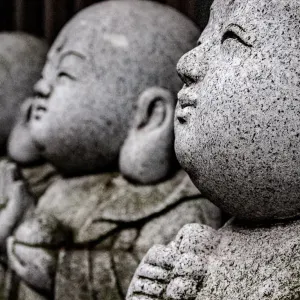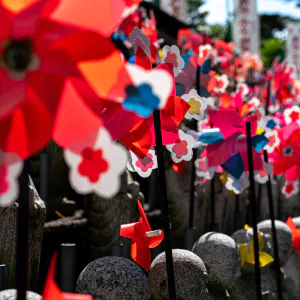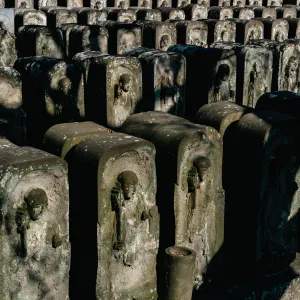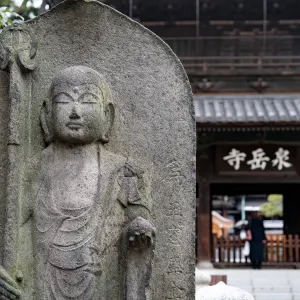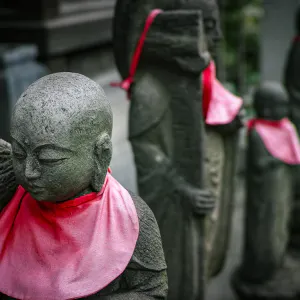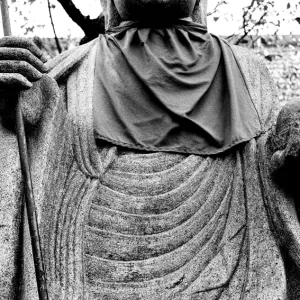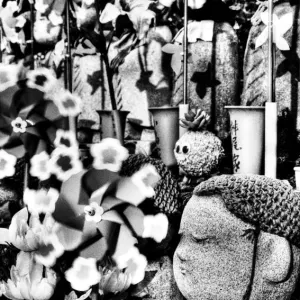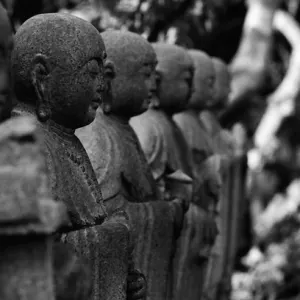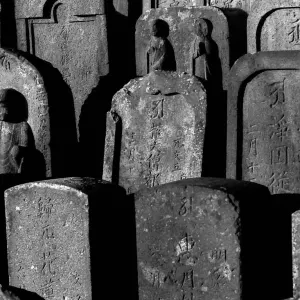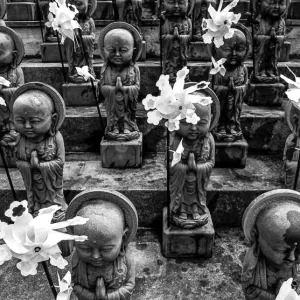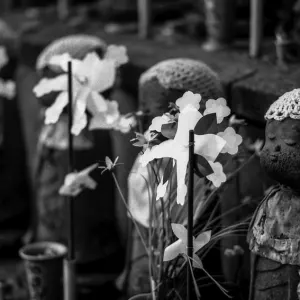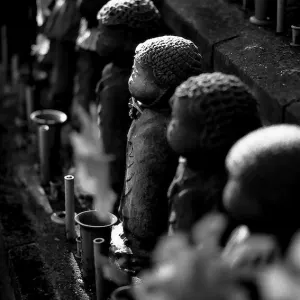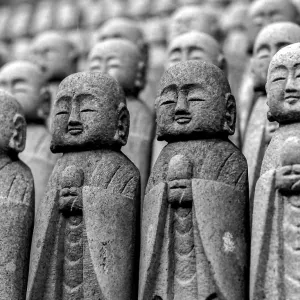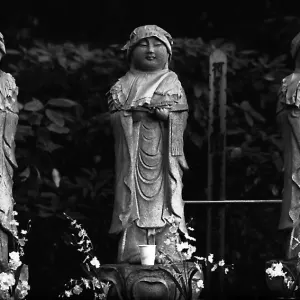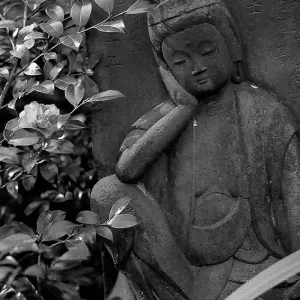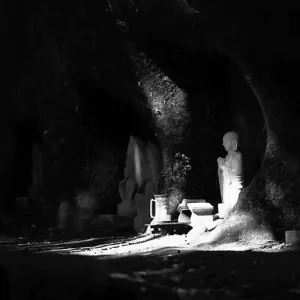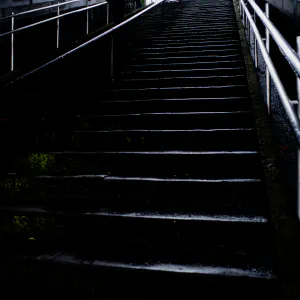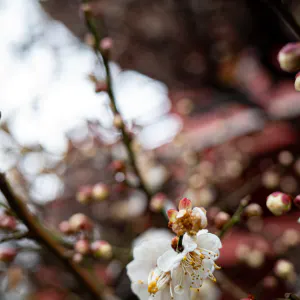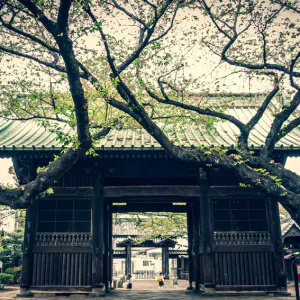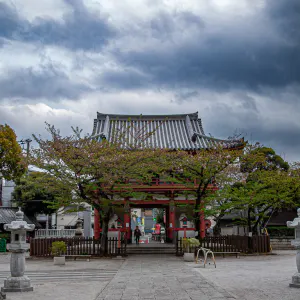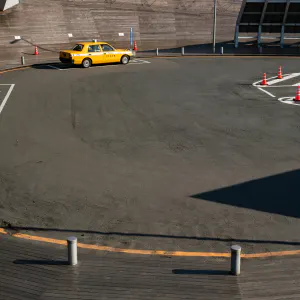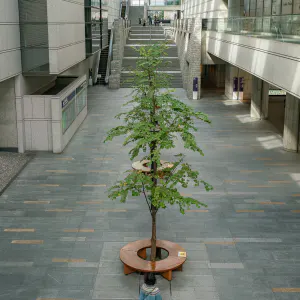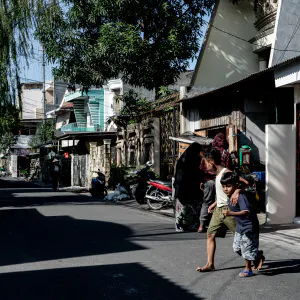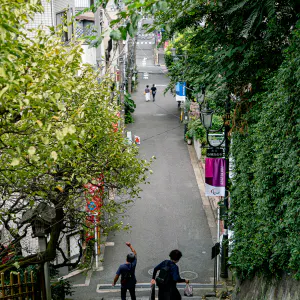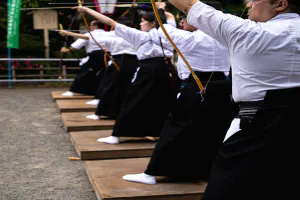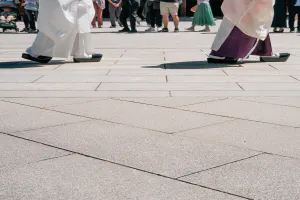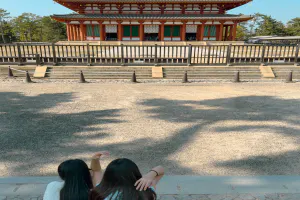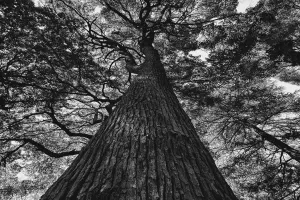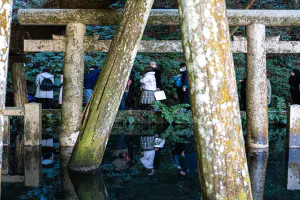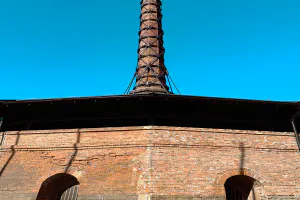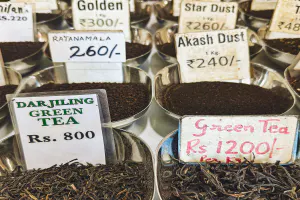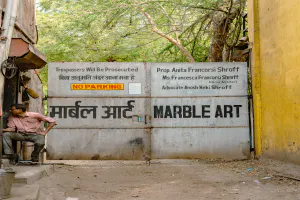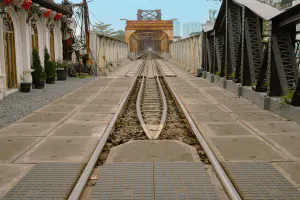Many Jizo statues stand in the precincts of Daien-ji Temple on the way to Gyonin-zaka
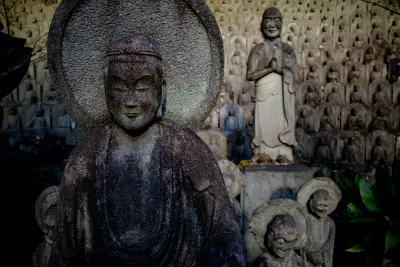
Going south on Meguro-dori from Meguro Station, you will soon come to a hill. It's Gonnosuke-zaka. It has a very old-fashioned and ugly name, but it comes from a man named Suganuma Gonnosuke, who is said to have actually existed in the Genroku era. He is said to have been the person who opened the Gonnosuke-zaka slope, and also to have been executed for pleading with the shogunate to reduce the annual tribute because he felt sorry for the farmers in the area who were suffering from the heavy tribute.
It was a long time ago, so it is hard to say what kind of person Suganuma Gonnosuke really was. However, it is true that Gonnosuke-zaka was built later because the main road connecting the old Edo city and Meguro was too narrow, steep and inconvenient.
Interestingly, the road that was considered inconvenient still remains intact. This is Gyonin-zaka, which runs parallel to Gonnosuke-zaka. It is indeed narrow and has a steep slope. In the unpaved days, it would have been difficult to climb even on a sunny day, and must have been even more difficult on a rainy day.
On the side of such a narrow slope stands a Buddhist temple called Daien-ji Temple. Like Gyonin-zaka, it is a modest temple, but it has a long history, having been built in 1624. As I stepped into the narrow precincts, I saw many Jizo statues standing in one corner. It is said that they were built to memorialize the victims of the Great Meiwa Fire of 1772, which started at this Daien-ji Temple.
It is said that the fire that broke out from Daien-ji Temple spread to Azabu, Kyobashi, Nihonbashi, Kanda and Senju. Considering the fact that 14,700 people died, the number of Jizos erected in the temple grounds seems a little small.
| Aug 2021 STILL LIFE TOKYO | |
| JIZO MEGURO TEMPLE |
PHOTO DATA
No
12012
Shooting Date
Feb 2021
Posted On
August 28, 2021
Modified On
August 18, 2023
Place
Meguro, Tokyo
Genre
Still Life Photography
Camera
RICOH GR III
